The old bull is on the ground. The drama has run its course. The adrenaline has subsided, the sweat has begun to crystalise and the realisation that a successful hunt has concluded without injury or mishap has begun to sink-in.
Before long, the villagers began to arrive.This was the first elephant of the season and with protein is short supply, it was in demand. Men, women, children and dogs of all kinds began to congregate.
As the hunters took a few photographs as mementos, the gathering crowd waited, almost patiently, for their turn.
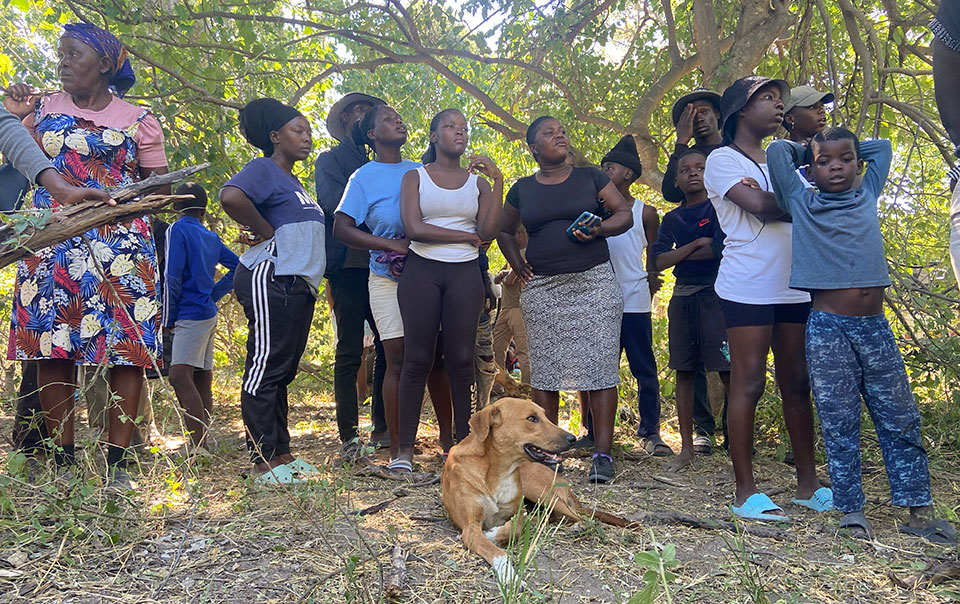
The first to wield their knives are the skinners. Big panels of skin are removed with precision and speed, then carried to a waiting Land Cruiser. They are headed for the tanning shop to be processed before they are shipped to Texas to be made into furniture and boots and motorcycle luggage.
While they work, the villagers stand back with knives and axes in hand, ready for the moment they will be called forward. Hungry dogs, some painfully emaciated, watch with hope in their eyes, hope that with a carcass this huge there might be some spare meat even for them.
The villagers here are not like those we met in 2007 when we hunted the Okavango Delta. Now they have mobile phones, they wear jeans, some look like American gang-bangers with Tupac inspired bandanas and imitation gang signs thown for photographic impact. Even in this remote region, modern communication has quickly changed lives and attitudes.
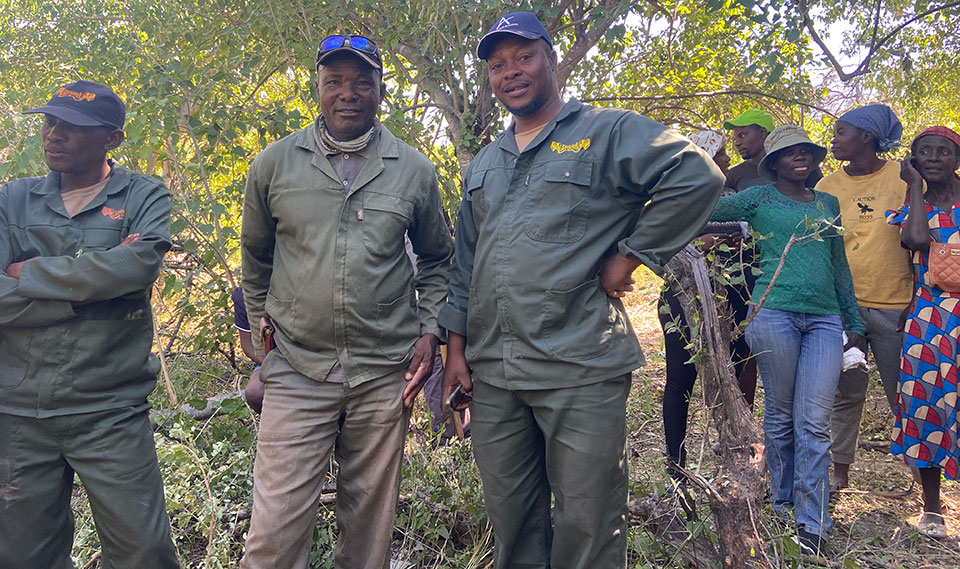
The gathering, however, underscores a serious truth. The fallen elephnat has not died in vain. He will feed a great many people for quite a long time. Rather than being a nuissance, chasing the children and killing the livestick, he has been dispatched and the locals are happy about that. Living with elephants is not easy.
In this part of Africa, elephants are very numerous and the human-animal conflict for resources is palpable. Sport hunting at least gives the elephants value but it does not prevent the animals being a constant threat to the subsistence farmers who eek out a living on this dusty red ground.
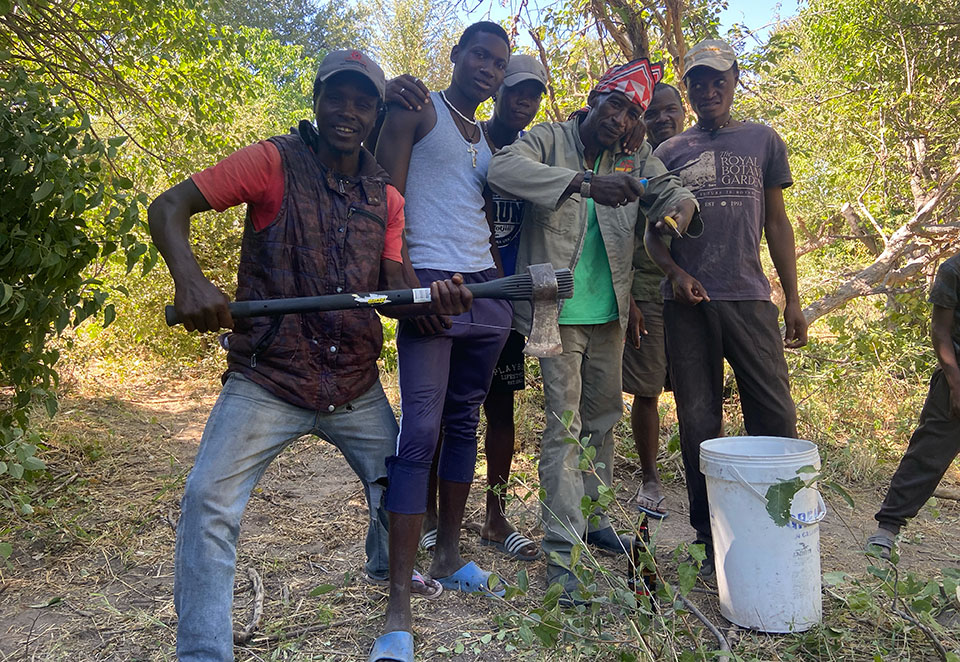
Once the skinners get to work, it does not take long for the hide to come off, revealing a thin layer of fat over the tons of dark red flesh. The variety of cutting implements is myriad. Bowir knives, kitchen knives, machetes; even Stanley knives, which prove surprisingly effective skinners.
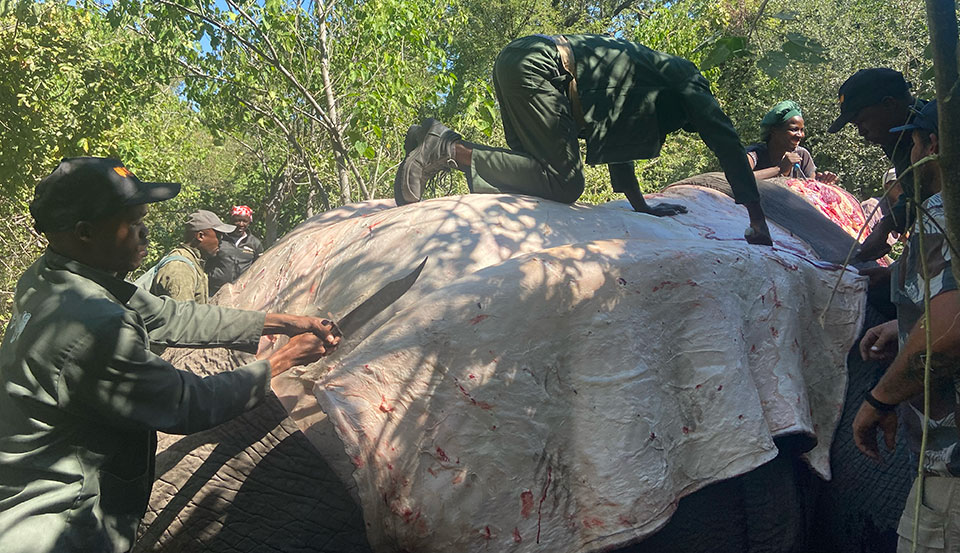
Without instruction, people naturally step forward to help the skinners carry their burden to the waiting truck, others make way. There appears to be an unspoken process which everyone understands taking place, those who have a part to play step forward at the appropriate time, while others make way or wait their turn.
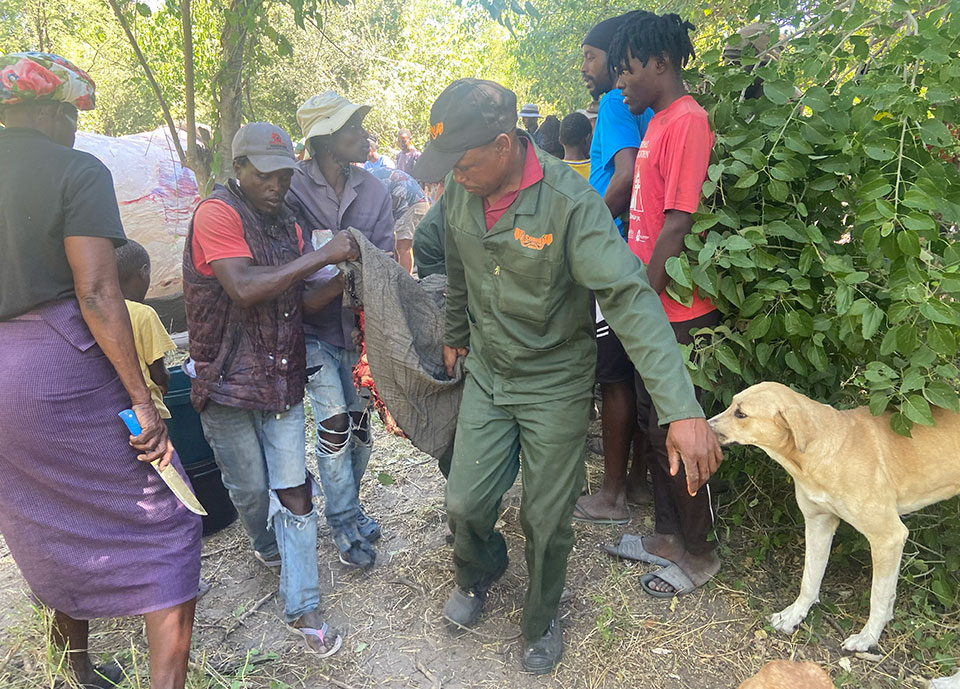
With the skin off, the axes come out and the head is removed so the ivory can be hacked out. It is a brutal spectacle, changed not at all since the days Karamojo Bell. Powerful men wield sharp, heavy axes with impressive precision, chopping away layers of flesh and bone to detach the tusks.
One wrong blow and the prize could be damaged or ruined but there appears to be neither fear of this kind of disaster nor concern as to the consequences. The power and precison is metronomic and as the honeycomb structure of the skull gives way, morsels are stacked beside the watching children and hungry dogs get thrown scraps, which they devour with gusto.
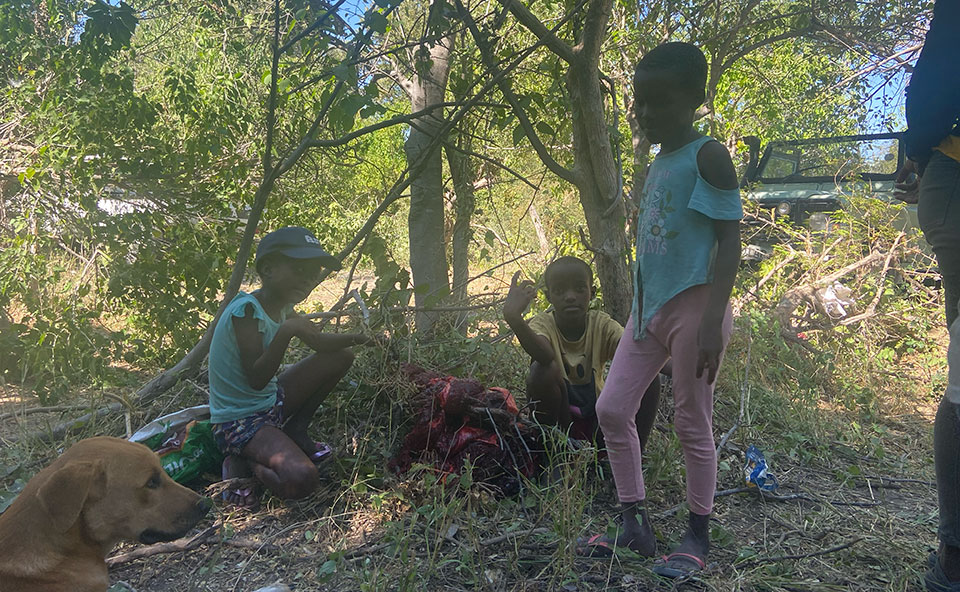
Meanwhile, the scene at teh main event is equally entralling. Scores of villagers wield sharp knives and hack lumps of flesh from the carcass. Despite teh proximity of others, teh aparent free-for all and the lack of direction, nobody gets cut, nobody gets hit, nobody looks concerned. It would give the average Health & Safety officer in the West a heart attack.
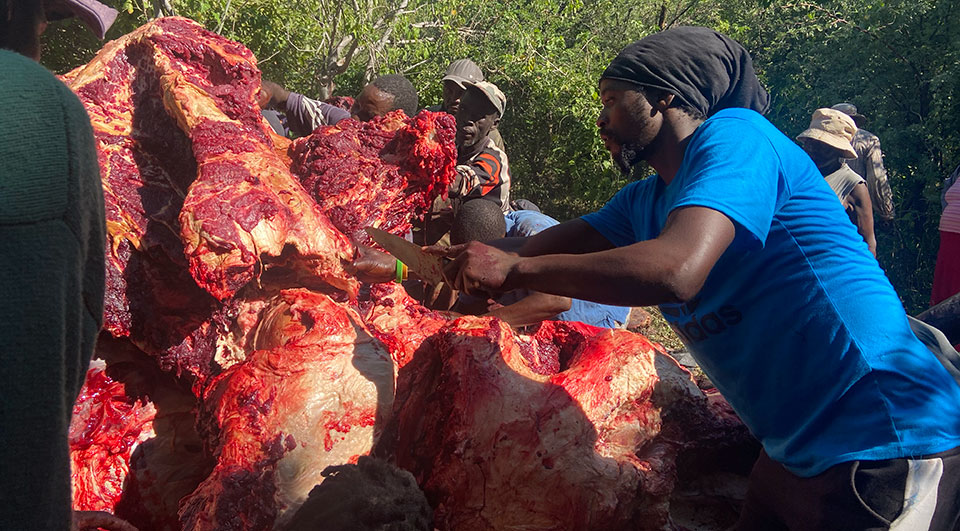
There is no argument, everyone seems to be getting a share of the meat. The men cutting do so with a grace and rhythm that belies the apparent chaos and carnage. They pass cuts of meat back, where waiting women place it in buckets or simply carry it away in their arms. Others slice it into strips and begin hanging it on makeshift wooden frames, or even in the branches of trees to dry in the arid heat.

While the hunters sit in canvas chairs and enjoy thir lunch and a cigar, recounting stories of the day and of the weeks gone by, the butchery reaches its conclusion and the people begin to melt back into the bush from whence they came.
By now, the flesh is gone from the skull and the ivory detachment almost complete. The next day, with the long nerves removed and the tusks put on the scale, they prove to be huge: 77lbs a side and very even.

We leave the scene, laden wih the tusks and skin panels and depart for camp. Our trackers have taken their share of elephant meat with them and as we settle back in for teh evening, they begin hanging it up to dry. Cured in this manner it will last up to three months and be used as a daily source of much valued protein.

We took the cheeks back with us. Elephant meat is not considered the most delicate of what the bush has to offer but the cheek is the tenderest part, apparently. Being free from the fatty marbling of beef, it can be both tough and dry when cooked. To couter this tendency, Richard prepared kebab-like skewers, alternating lean meat with cubes of fat, so the fat basted the meat as it cooked over the hot coals.
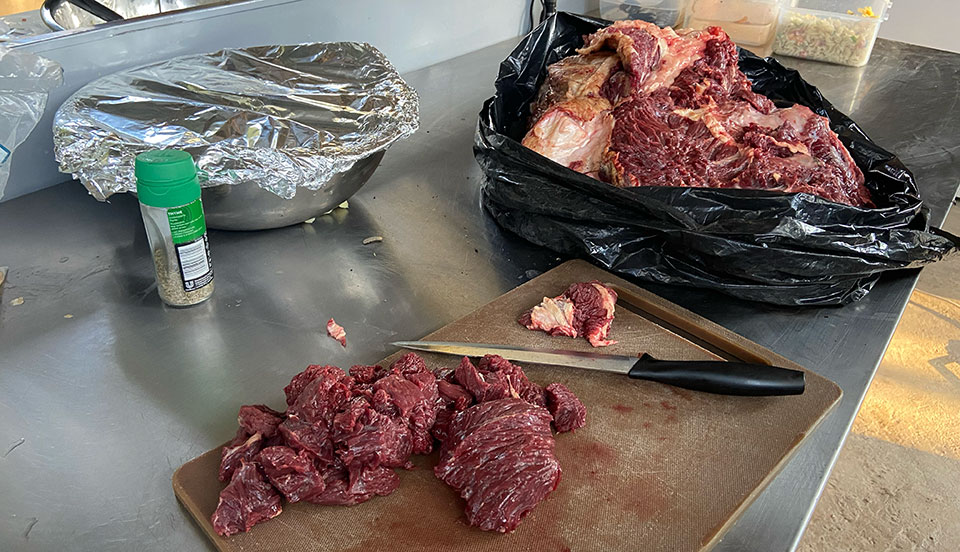
The resultant dish was succulent, charred on the putside, soft and pink inside. It was still chewy and required a bit of effort to break down in the mouth but the flavour was good, more like beef than venison. At the end of a hard ten days of hunting, which had looked quite likely to end without a shot, the old man of the Delta fed us well and both this meal and the cold beer which accompanied it was a welcome and celebratory conclusion to a memorable adventure for all concerned.
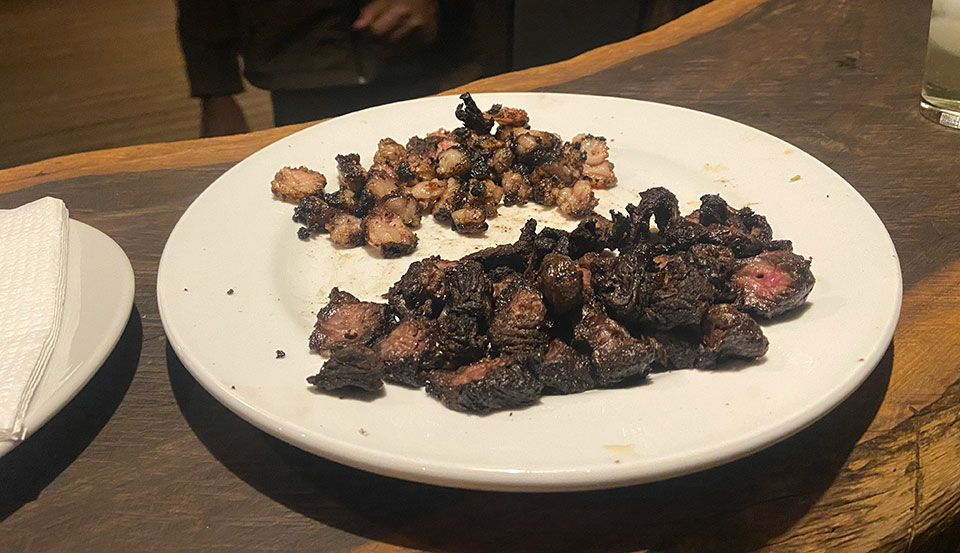
Published by Vintage Guns Ltd on



